 |
|
Albas |
This
month's feature is a new article written by Ralph Moore, famous rose
breeder from California. Mr. Moore is best known for his remarkable
work in breeding modern miniature roses. There are very few BREEDING
WITH CRESTED MOSS (R. centifolia cristata) I
obtained seven seedlings of 'Little
Darling' X 'Crested Moss',
and it took 3 years to see the first blooms. One was fairly well crested
with well-formed 4" double pink flowers on a once blooming climber.
This was introduced by Dorothy Stemler of Roses of Yesterday and Today
as 'Crested Jewel' and
has enjoyed limited worldwide distribution. This variety sets seed and
produces fertile pollen. It is from this variety that I have bred all
of my repeat flowering bush type crested seedlings up to 1999. Self-pollination
of 'Crested Jewel' has
not produced any repeat-blooming offspring. The 'Baccara' X 'Crested Moss' cross gave a variety of seedlings, all tall, climbing plants but none were repeat-bloomers. Various shades of pink flowers were achieved but none good enough to carry on to the next generation. Sepals were too short to have any cresting. None of these were kept. At right: 'Little Darling' X 'Crested Moss' resulted in 'Crested Jewel'. One
selection from 'Queen Elizabeth'
X 'Crested Moss' had
fully double soft pink flowers of old fashioned form with well-crested
buds. It was a tall, semi-climbing plant with small but good foliage,
and no repeat bloom. It sets seed and has pollen. My work with this
selection (we call it 'Queen Crest') was interrupted because
my original large plant was cut off by a gopher, but I do have several
younger plants to work with. My cross of a seedling I call STW-1 (Sister Theresa X Wilhelm) X 'Crested Jewel' is a tall repeat flowering shrub with single (7 - 10 petals) pink flowers. Buds are fairly well crested and this plant sets seeds, which germinate quite well. We are now using this as a seed parent. I also have two bush selections (floribunda types), each having nice semi-double flowers and produce pollen and seeds. The first, from a cross of 'Baccara' x 'Crested Jewel' is orange. The second, from 'Saraband' x 'Crested Jewel' is a good red and has produced pollen and seeds. At left: An un-named Crested hybrid at Sequoia Nursery. Photo by Paul Barden. This
year I have a new selection (a 1999 seedling) which I am very interested
in. It makes a low bushy plant with pink to light red 3 inch, 10 petaled
flowers. Buds are well crested, repeats its bloom all season, and the
original plant set several seed hips. I planted the several seeds and
now (March 5, 2000) have 2 small seedling. At right: Another un-named Crested seedling. Photo courtesy of Ralph S. Moore. In attempting a project like this, you can expect to put 12 to 20 years into it to achieve some success, but it is worth trying. However, to get repeat flowering plants, you may want to make your first crosses using a repeat flowering bush variety, in which case you may get very little cresting. Should you be successful in getting pollen from 'Crested Moss', expect all first generation seedlings to be tall (climbing) and once blooming, and it may take three years to see the first blooms. From your first crosses (repeat flowering bush X 'Crested Moss' or similar) some of the resulting seedling should show some cresting. Then to get repeat flowering it is necessary to cross back to a repeat flowering variety and hopefully retain some of the cresting. So it is a back and forth process (a yo-yo effect) to get both repeat flowering and cresting. It is a long, tricky process, but this was also the method I used to get repeat flowering regular moss roses. I
had worked the same back and forth method with the old moss roses to
get my repeat flowering plants and it took 25 years. But I thought that
with the crested rose, I could achieve the desired results more quickly,
as I had already learned the ropes. In fact, I At left: Another Crested hybrid at Sequoia Nursery. Photo by Paul Barden. Since my early attempts in using 'Crested Moss' pollen I have never been able to find anthers (pollen) on any plant of this variety. It appears to be both male and female sterile (or nearly so). Years ago, when I sent photos of my crested seedling ( from the original 7 plants) to Dr. Walter Lammerts, he wrote right back with the question "How did you find any pollen?" So it isn't easy - but we can dream. Ralph
S. Moore To read more about Ralph Moore's career in breeding Modern Miniature Roses, see his 1967 volume "All About Miniature Roses", published in its entirety as a feature of my web site. For tips on rose culture, pruning, propagation and history, see "Other resources on this site". Any time you want to return to this page, click on the "thorn icon" in the margin at the upper left corner.
There
have been |
|

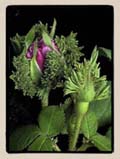
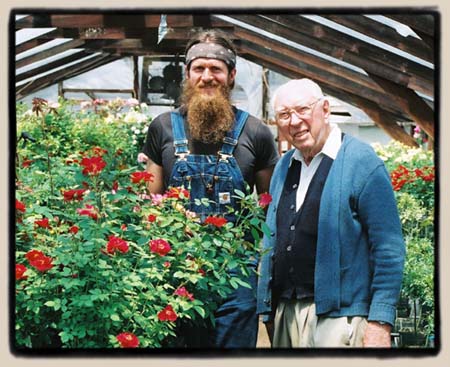
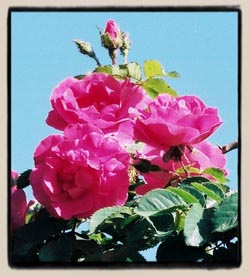
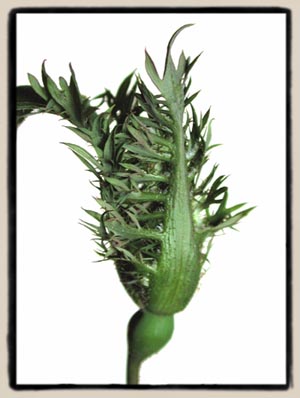
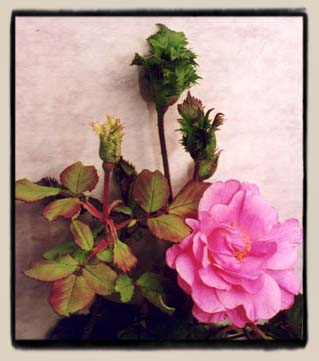
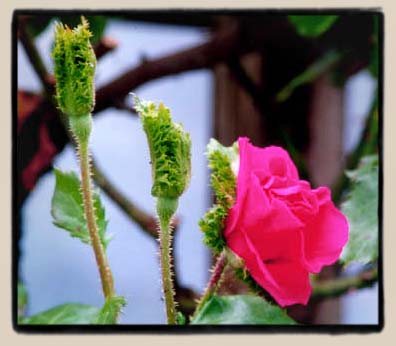 found
it much more difficult and time consuming, mainly because there was
so little to work with. Of course, had I known what I know now I could
surely have cut the time factor.
found
it much more difficult and time consuming, mainly because there was
so little to work with. Of course, had I known what I know now I could
surely have cut the time factor. 